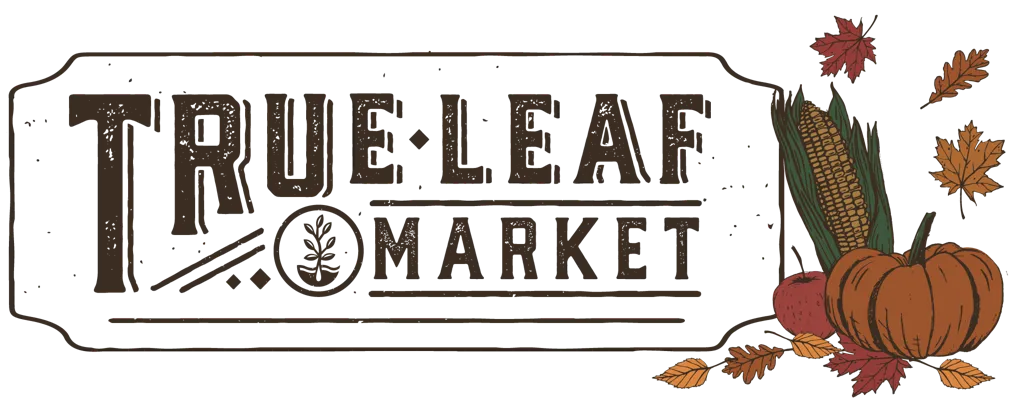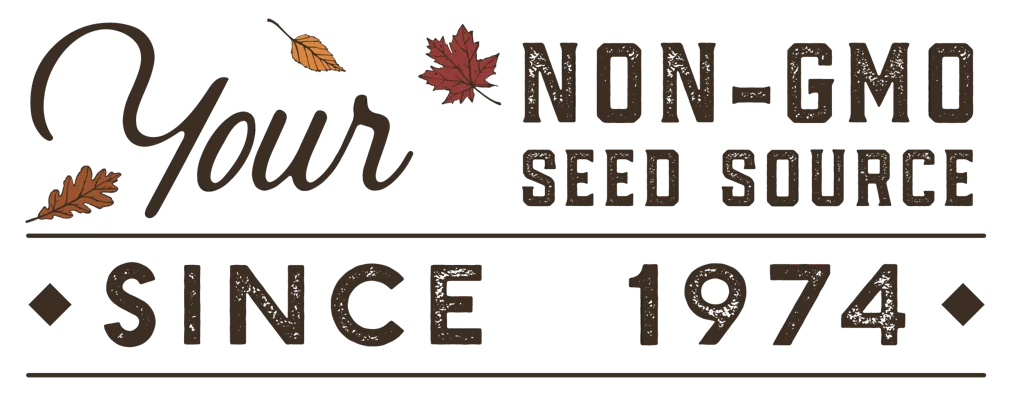Download Free Vegetable Growing Guide PDF
Growing Jamaican Yellow Habanero Hot Peppers in the Vegetable Garden
Peppers are easily cultivated in a home garden. Because the plants need a long growing season and prefer warm temperatures, it is almost always best to start the pepper plants indoors around 6-8 weeks before the last frost date of your area. Sow the seeds about a quarter inch deep in well-draining, yet moistened potting soil or germination mix. Cover the trays or cells with a humidity dome to retain moisture and heat. Using heat mats is especially useful at this stage to promote proper germination temperatures.
As soon as the seedlings break through the soil surface, remove the humidity dome and expose them to full sun conditions; indoors this is often best done with supplemental grow lights. A sunny windowsill can sometimes be enough light but for optimal results, LED lights are recommended. Continue to care for the seedlings with attentive watering practices, 8-14 hours of direct light each day, warm temperatures (70-80 F) and adequate ventilation.
Around 2 weeks before the final frost date in your area they should be ready to begin transitioning outdoors. They should have at least two sets of true leaves and a fairly extensive root system. Begin by placing the trays outdoors for a few hours each day to begin the transition. Bring them in anytime temperatures dip too low and gradually expose them to cooler days, wind, and rain. By the time the last frost date rolls around, the seedlings should be primed for the garden!
Prepare the garden bed by incorporating compost or fertilizer and breaking up any compacted soil. Dig holes 18-24 inches apart and about as deep as the root ball of each plant. This spacing allows for ventilation betweens plants and reduces diseases. Plant the seedlings, backfill the hole, and tamp it down. Water them in so the top 6 inches of soil is moistened.
Care for your pepper plants throughout the growing season by watching for pests and disease and taking prompt action. Mulch around the plants with a high-quality, untreated mulch. Fertilize periodically throughout the season with a balanced fertilizer. Peppers benefit from good phosphorus levels in the soil; supplement if necessary. Direct sun and hot temperatures increase the spiciness (SHU) of the pepper.
Harvesting Jamaican Yellow Habanero Hot Peppers
Jamaican Yellow Habaneros are ready to harvest when they are a bright orange or yellow color. They can ripen off the plant but are best if allowed to fully ripen before removing. Use a knife or shears to cut the peppers of the plant, leaving a short stem attached. Harvest as soon as they ripen in order to promote more fruit throughout the season.
About Jamaican Yellow Habanero Hot Pepper Garden Seeds
The Jamaican habanero pepper is sometimes known as the Mushroom Chile Pepper because of its small and distorted 1 inch tall baby bella mushroom appearance.
Hot peppers make a great companion plant for a variety of other plants because of their spicy nature. Deer and other animals avoid it because they don’t like the capsaicin that makes it so fiery.
The Jamaican Yellow Habanero ranks around 100,000 to 350,000 Scoville Heat Units depending on the amount of heat and sun the plant was exposed to during the fruit’s maturation.
Hot peppers are a popular option for container gardening as they only need about 5 gallons of soil in order to thrive. Just be sure the container and the soil is well-draining and the plant gets properly watered and fertilized.
Tips From Our Gardeners
"Gardeners with sensitive skin should always use gloves when handling hot peppers or their seeds. Do not touch your eyes or face after handling them without thoroughly washing your hands with soapy water."
 |
- Lara Wadsworth, True Leaf Market Writer
|
Other Resources
Jamaican Yellow Habanero Hot Pepper Seeds Per Package:
- 300 mg - Packet - Approximately 50 Seeds
- .25 oz - Wholesale - Approximately 1,500 Seeds
- 1 oz - Bulk Seeds - Approximately 6,000 Seeds
- 4 oz - Bulk Seeds - Approximately 24,000 Seeds
- 1 lb - Bulk Seeds - Approximately 96,000 Seeds
Non-GMO Jamaican Yellow Habanero Hot Pepper seeds are available for Fast Free Shipping on qualifying orders.
=======
ATTRIBUTES
Basic Info
| Latin Name: |
Capsicum chinense
|
| Pepper Type: |
Hot - These peppers all have some heat and usually rank at least 100, but usually 500 or more on the Scoville scale and have heat ranging from mild to extremely hot.. |
| Jamaican Yellow Pepper Color: |
Orange, Yellow |
| Jamaican Yellow Pepper Flavor: |
Relatively mild, smoky citrus flavor |
Growing Info
| Hardiness Zone: |
4, 5, 6, 7, 8, 9, 10, 11, 12, 13 Technically a tender perennial, but commonly grown as an annual. Perennial in zones 10 and 11. |
| Days to Maturity: |
80-89 (from transplant) |
| Days to Germination: |
7-10 |
| Seeding Depth: |
0.25 inch |
| Plant Spacing: |
18-24 inches |
| Row Spacing: |
24-36 inches |
| Plant Height: |
24-36 inches |
| Growth Habit: |
Upright |
| Soil Preference: |
Well-draining, loose (sandy loam), slightly acidic (6.5 pH), and moisture retaining. Too much nitrogen in the soil may lead to more foliage production and less fruiting, similar to tomatoes. Peppers also need sufficient amounts of phosphorus and calcium. We recommend using a balanced fertilizer for the best results. |
| Temperature Preference: |
Warmer (70-85 F). During high heat, foliar and flower development slow or pause until temperatures return to the preferred range. |
| Light Preference: |
Full Sun |
Other
| Direct Sow: |
No |
| Start Indoors: |
Yes. Start Indoors 6-8 weeks before your last spring frost date. Harden off and transplant when seedlings are 6-8 inches tall. Bury the stem slightly deeper than the root ball. Avoid planting hot and sweet peppers right next to each other, as they can cross-pollinate, potentially affecting the flavors of your harvested peppers. |
| Pepper Pollination: |
Peppers have perfect flowers (male and female parts) and will self-pollinate. However, wind and pollinator activity may increase success rates of fertilization and fruit production. |
| Plant Width: |
18-24 inches |
| Deer Resistant: |
Yes |
| Scoville Heat Units: |
100,000 to 350,000 |
| Heat Level: |
Extra Hot - 100,000 to 300,000 on the Scoville Scale. Example: Most Habaneros |
| Growth Speed: |
Late - Ready for harvest around 91 days or more from transplant. |
| Germination Temperature: |
80-90 F |
| Pests and Diseases: |
Peppers are commonly susceptible to cutworms, aphids, flea beetles, bacterial spot, Phytophthora, sunscald, and blossom end rot. To avoid or reduce problems with pests and diseases, stick to a regular watering schedule (drip irrigation is preferred), plant into well-draining soils, and utilize practices such as crop rotation. When taking pest control measures, consider utilizing integrated pest management principles by using mechanical removal, biological control, and other cultural practices before turning to chemical agents. |
| Garden Size: |
Greenhouse, Garden Plot, Raised Bed, Container |
| Pepper Use: |
Perfect for sauces and salsas. |
| Climate Tolerance: |
Heat, Drought |



















